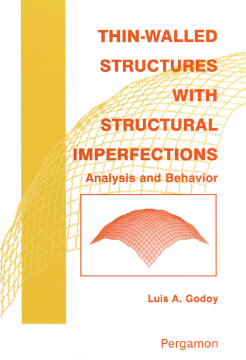
Additional Information
Book Details
Abstract
Thin-walled structures are designed with advanced numerical analysis techniques and constructed using sophisticated fabrication processes. There are, however, a number of factors that may result in a structure that is not exactly coincident with what was considered during the design calculations. These features may be associated with changes in the properties of the structure, in the geometry, and many others. But even small changes in the structure may sometimes produce significant changes in the response.
The present work is intended to introduce professionals and researchers to the effects of imperfections on the stresses in thin-walled structures. The main idea behind the presentation is that small imperfections may introduce changes in the stresses that are nearly equal to the stresses due to the loads.
The book is organized into two main parts. The first part (Chapters 1 to 6) covers the techniques for analyzing imperfections. In the second part the emphasis is on applications, which at present may be found scattered throughout many scientific and professional journals. More practical aspects of imperfections may be found in Chapter 12.
It is assumed that the reader is familiar with finite element techniques, and with the basics of shell structures.
R. Narayanan
...With the current trend of large structures of complex shapes, this book will be helpful in covering all aspects of imperfection analysis in a single source. The book, which is possibly the first in the topic, will be an asset to practising design engineers, research scientists as a reference book and as a text book for post-graduate studies....The publishers deserve appreciation for the quality printing and illustrations and alos bringing out the book on this useful practical topic.
Journal of Structural Engineering
